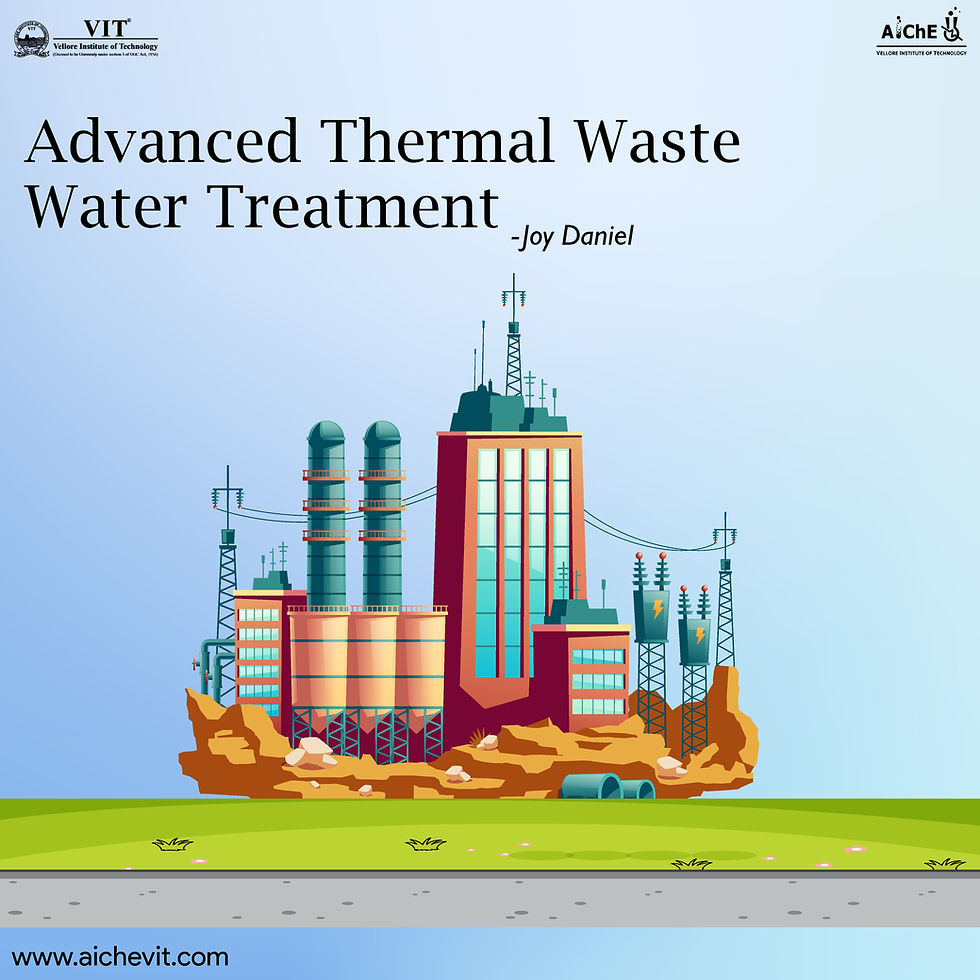The Future of Batteries
- AIChE-VIT

- Apr 30, 2022
- 4 min read

There are no black and whites in the world of battery, only shades of grey.
Time is one of the most significant aspects of research, and fortunately, its passage has been favourable to batteries and their uses. In the first decade of the 21st century, we used batteries to power cars and computers. Today, they power everything, from our toothbrushes to house cleaning mops; their importance and variations with which we use them have increased exponentially. Almost every other new gig requires batteries, be it renewable or non-renewable, rechargeable or not.
Cardinally, a battery is a combination of multiple electrochemical cells made up of two electrodes, removed by a separator and saturated in an electrolyte to enhance ion movement. It can be compared to humans, so to speak, because it needs recovery from work with a restful charge. Batteries work by storing energy in the form of chemical energy, which helps in its storage in a dense form.
They are made of various materials and function on different technologies. The most well-known battery today is the Lithium-Ion battery, which powers portable electronics, electric vehicles and medical devices, and has applications in several other places. Another widespread example is the Lead-acid battery, which is used in objects requiring less power. Ni-Metal Hydride batteries are also an option, with use in computing equipment. Li-ion batteries are gradually becoming the staple choice for the industry by replacing their Lead-acid and Ni-Metal Hydride counterparts, due to their peerless combination of high energy and power density, added with low self-discharge and high-temperature performance. These make Li-ion batteries the technology of choice for the near future. One of the primary components in Li-ion batteries is Graphite, which is used as the anode. Using graphite allows the creation of anodes with higher rate capability, energy density and better safety performance. To be used, natural graphite, which exists in flakes, has to be converted to spherical form, which allows more efficient packing, thereby increasing conductivity.
However, the low availability of Lithium and some transition metals used in Li-ion cells and the high cost of material recovery, with the low rate of recyclability, are some demerits to these batteries. The high cost directly results in extremely costly equipment. Recycling battery components is critical from both a material and an environmental aspect. Not only can we charge and discharge the battery, but it can also be dismantled, and the components recycled to make new batteries at the end of their life. The Electric Vehicle (EV) industry is a prime example of this.
Batteries are an essential part of EVs, as they are the decisive factors in deciding the overall lifetime of the vehicle. They are part of the draft a consumer considers while switching to an EV. Extensive research into this field is being done to reduce the cost, increase the applications and improve the technology of Li-ion batteries.
These technologies include Graphene-based battery electrodes. Graphene, an allotrope of carbon, is proposed to replace Graphite as the anode, which increases the energy density and storage, while also increasing the conductivity. The higher electrical conductivity of Graphene results in faster charging speeds, and its high heat conductance allows batteries to run cooler, extending their life, even in equipment with less space like smartphones. These batteries can allow smartphones to be thinner with even more battery life. However, due to high costs and a lack of feasible synthesis methods to be utilised in industrial production, this technology has a long way to go. Graphene-based batteries are a very promising technology, which on more research and cost reduction can bear fruitful results.
Much work has been done in the cellphone industry on charging methods, one of which is the Gallium Nitride (GaN) charger. GaN is a material which can be used as a semiconductor. It produces significantly less heat, allowing for less space while also operating at higher electrical voltages. Heat is a major factor in determining how long electronic devices keep working, and chargers are no exception. Reducing heat production gives GaN an edge over regular chargers.
Seawater Batteries are also an emerging technology, developed by IBM Research in collaboration with Mercedes Benz. They extract materials from seawater that are devoid of heavy metals and can outperform Li-ion Batteries. Solid-State batteries offer a vast improvement in safety at cell and battery levels, but at the cost of electrolytic transmission, meaning slow charging speeds. Nevertheless, the discovery of huge families of solid electrolytes is a great thing which needs to be developed.
These technologies and all the others that are being researched, with time, will yield results whose success might be questioned, but the learning can never be. All batteries have one thing in common: they run for a while and require an eventual replacement as the capacity fades. No such thing as a perfect battery exists, and each pack is designed for a certain application. Long duration, small size, and low cost are the priorities for consumer batteries; lifespan is less significant. Therefore, it has become increasingly important that people research and invest more in this vast field.
- Bhavik Kalani





Bhavik my battery is so weak can u charge it Nice theory bhavik keep it up👍
Well Concept Bhavik... Keep it up.... Good Job
U presented the concept of battery very well and in understandable way
Really liked it and hope u do ur ultra instinct best like goku in dragon ball
By dushyant ur dear friend
As expected, you've done an amazing job 👏👏, keep up the amazing work Bhavik.
Nice concept and content.. Keep it up